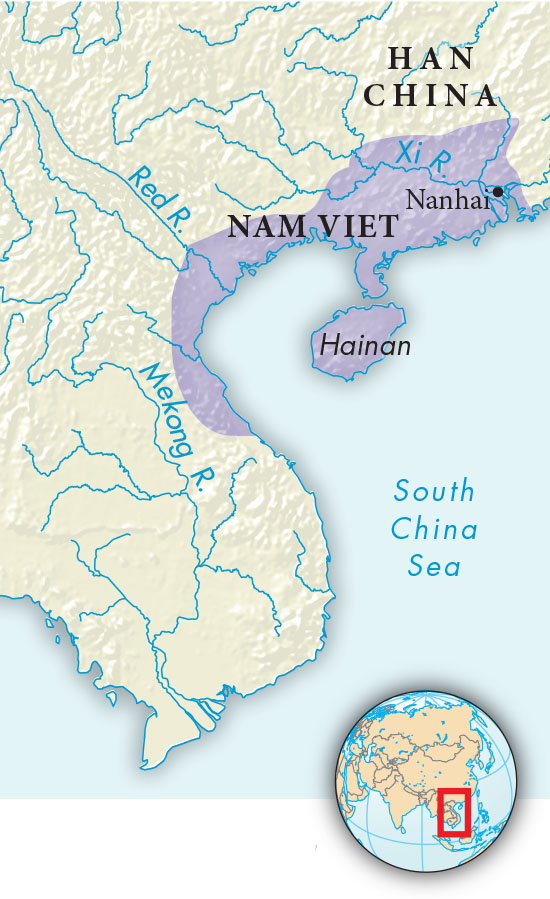Vietnam

Vietnam is today classed with the countries to its west as part of Southeast Asia, but its ties are at least as strong to China, and its climate is much like that of southernmost China — subtropical, with abundant rain and rivers. The Vietnamese first appear in Chinese sources as a people of south China called the Yue, who gradually migrated farther south as the Chinese state expanded. The people of the Red River Valley in northern Vietnam had achieved a relatively advanced level of Bronze Age civilization by the first century B.C.E. The bronze heads of their arrows were often dipped in poison to facilitate killing large animals such as elephants, whose tusks were traded to China for iron. Power was held by hereditary tribal chiefs who served as civil, religious, and military leaders, with the king as the most powerful chief.
The collapse of the Qin Dynasty in 206 B.C.E. had an impact on this area because a former Qin general, Zhao Tuo (Trieu Da in Vietnamese), finding himself in the far south, set up his own kingdom of Nam Viet (Nan Yue in Chinese). This kingdom covered much of south China and was ruled by Trieu Da from his capital near the present site of Guangzhou. Its population consisted chiefly of the Viet people. After killing all officials loyal to the Chinese emperor, Trieu Da adopted the customs of the Viet and made himself the ruler of a vast state that extended as far south as modern-
After almost a hundred years of diplomatic and military duels between the Han Dynasty and Trieu Da and his successors, Nam Viet was conquered in 111 B.C.E. by Chinese armies. Chinese administrators were assigned to replace the local nobility. Chinese political institutions were imposed, and Confucianism was treated as the official ideology. The Chinese language was introduced as the medium of official and literary expression, and Chinese characters were adopted as the written form for the Vietnamese spoken language. The Chinese built roads, waterways, and harbors to facilitate communication within the region and to ensure that they maintained administrative and military control over it. Chinese art, architecture, and music had a powerful impact on their Vietnamese counterparts.
Chinese innovations that were beneficial to the Vietnamese were readily integrated into the indigenous culture, but the local elite were not reconciled to Chinese political domination. The most famous early revolt took place in 39 C.E., when two widows of local aristocrats, the Trung sisters, led an uprising against foreign rule. After overwhelming Chinese strongholds, they declared themselves queens of an independent Vietnamese kingdom. Three years later a powerful army sent by the Han emperor re-
China retained at least nominal control over northern Vietnam through the Tang Dynasty, and there were no real borders between China proper and Vietnam during this time. The local elite became culturally dual, serving as brokers between the Chinese governors and the native people.